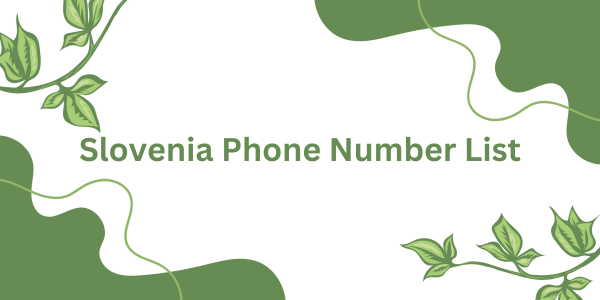|
|
Slovenia's rich and complex history has profoundly shaped its cultural identity, creating a unique blend of European traditions, languages, and heritage. Positioned at the crossroads of Central Europe, the Mediterranean, and the Balkans, Slovenia’s Slovenia Phone Number List historical influences stem from its strategic location and diverse rule under various empires and political entities.
1. Influence of the Austro-Hungarian Empire
For centuries, much of what is now Slovenia was part of the Austro-Hungarian Empire, a multi-ethnic empire that left a lasting imprint on Slovenian culture. Under Austro-Hungarian rule, the Slovenian people adopted European customs, traditions, and architecture. The legacy of this period is evident in Slovenia's urban design, classical music, art, and architecture, particularly in cities like Ljubljana.
2. Role of the Slavic Heritage
Slovenia's Slavic roots have shaped its language, traditions, and social structures. The Slovenian language, a South Slavic language, reflects this heritage, as it draws from shared Slavic linguistic origins while incorporating influences from German, Latin, and Italian. Additionally, traditional folk music, dance, and storytelling embody Slovenia’s Slavic identity, as they have been passed down through generations.
3. Medieval and Religious Influences
Throughout the Middle Ages, Slovenia was shaped by Catholicism and feudal systems, with medieval castles, monasteries, and cathedrals influencing cultural identity. Religion, particularly Catholicism, played a key role in unifying the Slovenian people under shared traditions and cultural practices, including festivities and community life.

4. World Wars and Independence Movements
The two World Wars disrupted Slovenian society and culture. During World War I, Slovenia was part of the Austro-Hungarian Empire, and the aftermath led to shifts in national identity as Slovenia transitioned into new political entities. The Ten-Day War (1991) and Slovenia’s independence from Yugoslavia in the 1990s further reinforced national identity and the drive to preserve Slovenian traditions, history, and language.
5. European and Mediterranean Cultural Influences
Geographically, Slovenia connects Central Europe with the Mediterranean, and USA Phone number Database this mix of influences is reflected in its cuisine, music, and traditions. Slovenian culture combines Alpine traditions with Mediterranean influences, creating a diverse cultural landscape seen in food, architecture, and social customs.
Conclusion
Slovenia’s history has fostered a complex, multi-layered cultural identity that draws from its Slavic roots, the influence of the Austro-Hungarian Empire, Catholic traditions, and modern European movements. This blending of histories, empires, and local traditions has given Slovenia a distinct cultural personality, marked by resilience, diversity, and a strong sense of national pride.
|
|